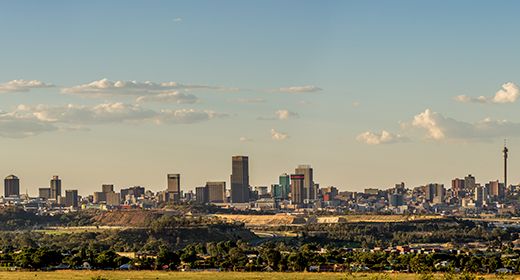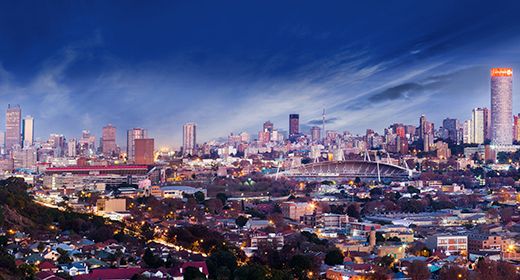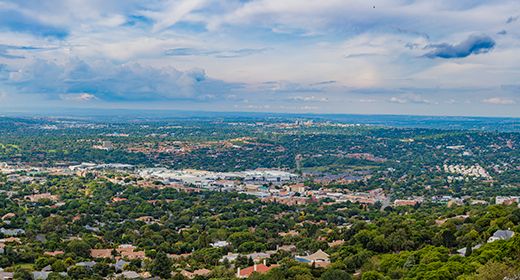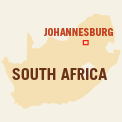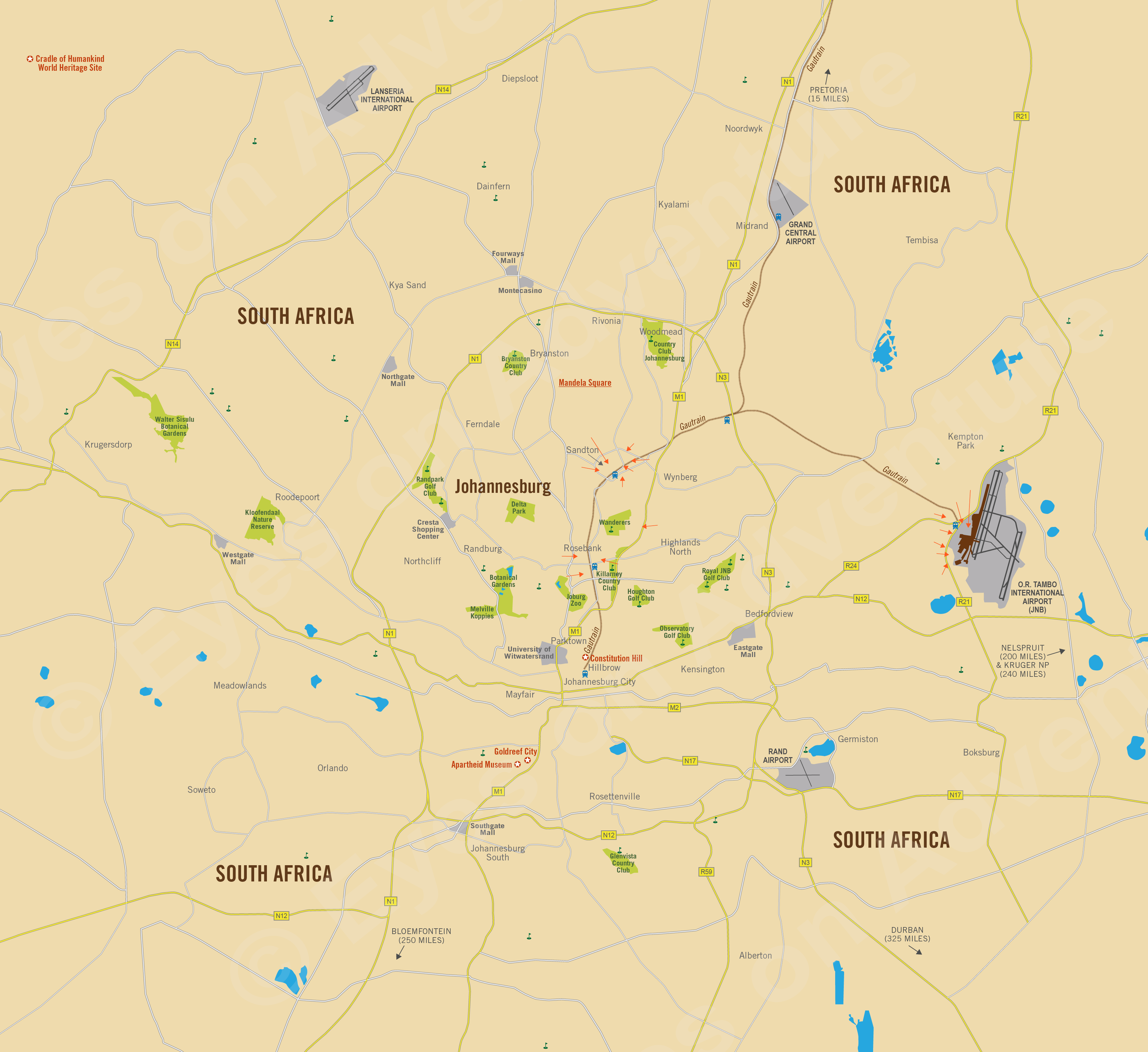Johannesburg
(incl. Joburg, OR Tambo Airport, Sandton)
Region Links: Cape Peninsula, Cape Town, Cape West Coast, Cape Winelands, Eastern Cape, Garden Route, Gauteng Province, Johannesburg, Kruger Park & Lowveld, Kruger Private Reserves, KwaZulu-Natal, Madikwe, Overberg & Whale Coast, Pilanesberg & Sun City, Sabi Sand Reserve
Highlights
- Take a guided tour of Soweto, South Africa's most famous township
- See the Cradle of Humankind World Heritage Site
- Visit the Apartheid Museum showcasing South Africa's history
- Shop for African art and curios at the Rosebank Flea Market
EOA Recommends: InterContinental O.R. Tambo Airport, Peermont Mondior, The Peech Hotel, The Residence, The Saxon
Johannesburg, also known as Joburg, Jozi, and eGoli ("City of Gold"), is the largest city in South Africa, with an urban population of between 8 and 11 million. Joburg is the primary entry point for international visitors to the Southern Africa region via its busy O.R. Tambo International Airport.
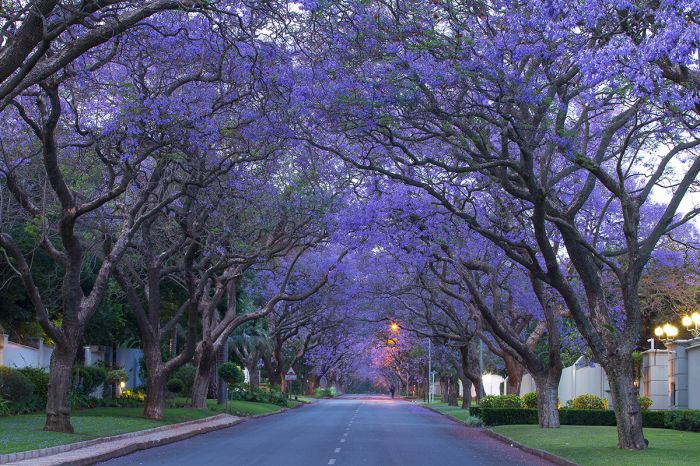
Jacaranda trees in the Houghton neighborhood, Johannesburg
Joburg is a sprawling and spread out city, so its population density is actually quite low for a major metropolis and it is scenically pretty, owing to the millions of trees that cover its numerous suburbs. In fact it is the largest city in the world that is not situated along a river or large body or water.
It is the most visited city in South Africa, but most international tourists do not spend much time in the city, rather opting for an overnight at the front and back ends of a trip.
Joburg has a rather unfair reputation for being an overly dangerous place to visit, but in fact the city has plenty to offer visitors wishing to stay a few days and see some sights.
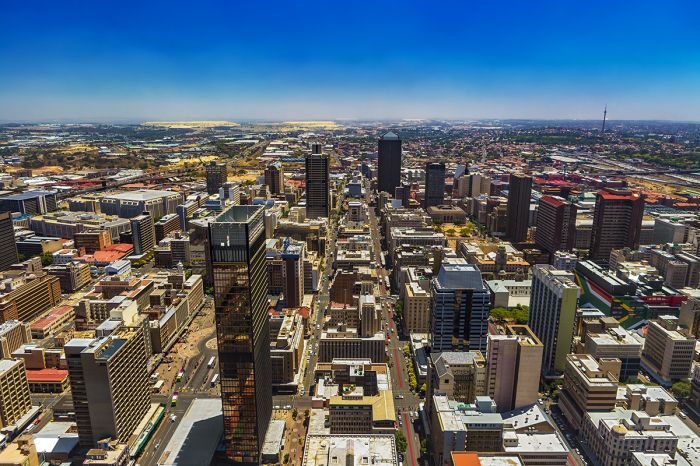
Downtown Johannesburg viewed from the Carlton Centre viewing deck
Shopping, especially in the upscale suburb of Sandton, where many popular hotels are concentrated, is a very popular tourist activity. Other places to consider visiting when passing through Joburg include Soweto, the Apartheid Museum, Goldreef City, and the Cradle of Humankind World Heritage Site.
Guided tours are a great way to see the sights in and around Joburg!
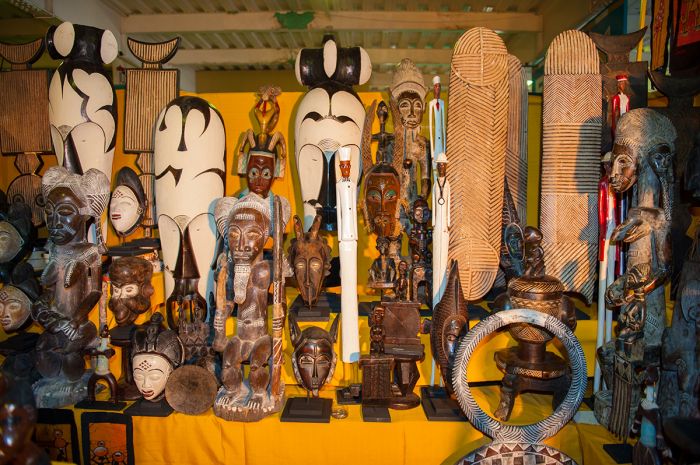
Shopping for African art at the Rosebank Flea Market (Copyright © James Weis)
Read More...
Apartheid Museum, CBD, City Centre, Cradle of Humankind, Gautrain, Geography, Gold Reef City, History, Northern Suburbs, Sandton, Southern Suburbs, Soweto
History
Johannesburg was established in 1886 when the main Witwaterswand gold reef was discovered. A major gold rush ensued and soon a growing tent city grew around the site. The authorities in Pretoria were forced to declare the growing camp a township and the chief surveyor gave it its name - presumably for the president of the South African Republic, Paul Johannes Kruger.
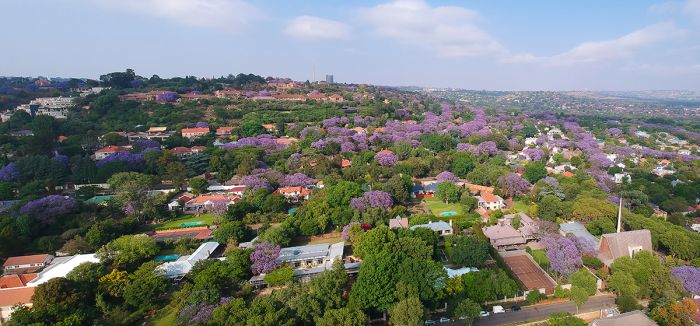
View over the Westcliffe suburb with jacaranda trees in blossom
Cecil John Rhodes and his chief rival, Barney Barnato, used their capital to exploit the gold mining business and prosperity continued. By 1895, the population had grown to over 100 000, with blacks and Indian workers forcibly moved into shantytowns on the city outskirts.
The Second Anglo-Boer War began in 1899 and in 1900, Johannesburg fell to the British, who wanted to control the gold-rich region. Concurrently, black townships were springing up, including Sophiatown and Alexandra.
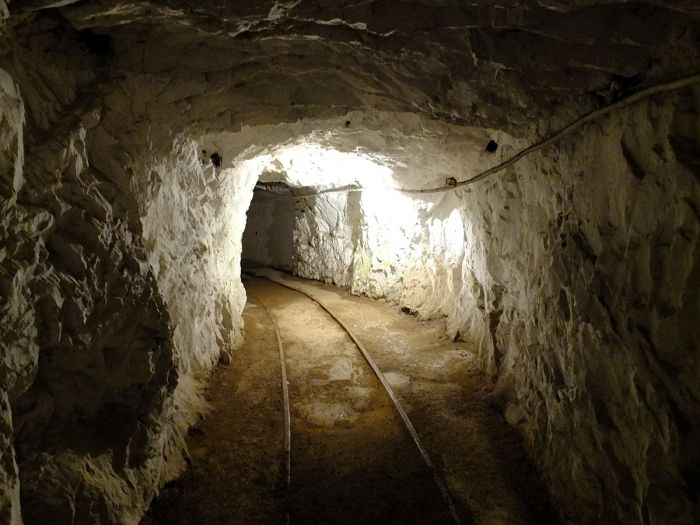
A gold mine in South Africa
In the 1930s, a black township called Orlando was established southwest of the city with a population of 80 000. It was the beginning of what would later become Soweto.
By 1945, Johannesburg's black population was over 400 000, a one hundred percent increase in just 10 years.
In 1955, all non-white residents were forcibly removed from the city's inner section and suburbs, and in particular from Sophiatown. Many thousands were moved to a new township called Meadowlands and Sophiatown was subsequently renamed as Triomf (Triumph). It was during this time that the ANC (African National Congress) rose to prominence as the primary black protest organization of the period.
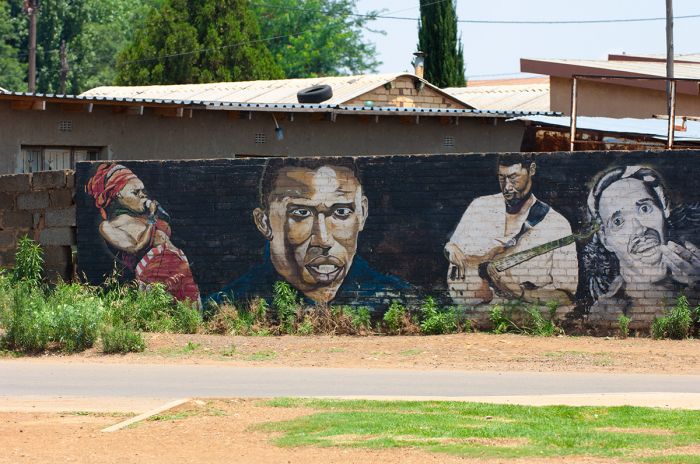
Wall art in a black township, Johannesburg (Copyright © James Weis)
Throughout the 1950s, black urban culture grew in the townships, with its own music styles being played in illegal drinking houses called shebeens.
The 1970s saw increased political activism among the black population and regular protests turned violent at times. During the 1980s, regular states of emergency were declared in response to escalations in violence between blacks and the government. By the end of the decade, enforcement of apartheid began to relax with non-white South Africans moving into some of the suburbs, including Hillbrow.
Nelson Mandela was released from prison in 1990 and widespread political unrest and violence ensued in Johannesburg and throughout Gauteng province right up until the day of the first democratic national election on 27 April 1994. The ANC comfortably won control in that election.
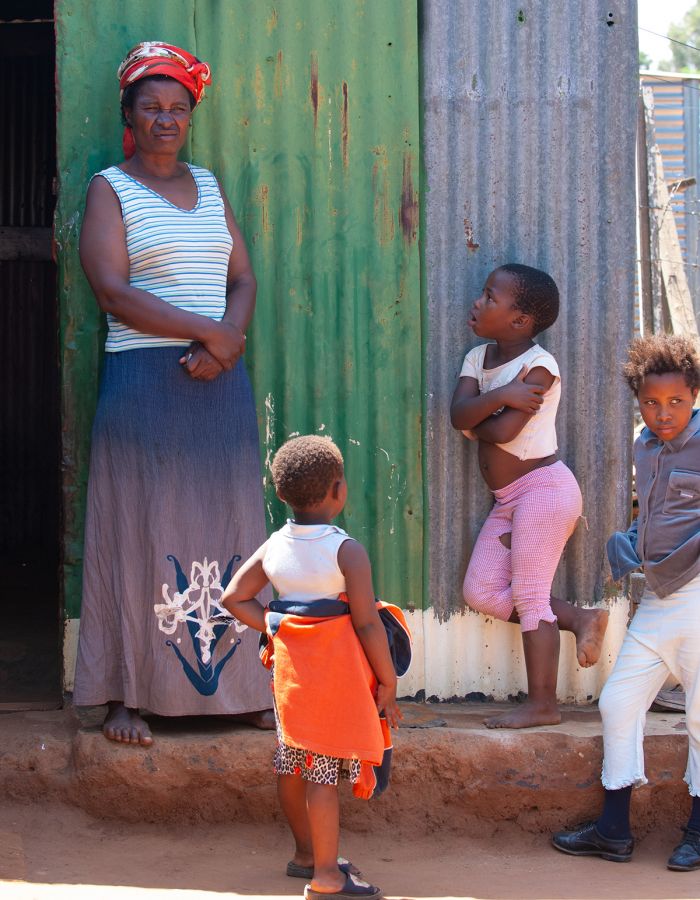
Residents in the township of Soweto (Copyright © James Weis)
In recent years, the ANC has struggled to maintain control and its opposition party, the Democratic Alliance (DA) has gained control of the city with a mayor from the DA elected in 2016.
Johannesburg's infrastructure has struggled to keep up with the growing demands of the area's increasing demands for low-income housing, energy supply, and clogged roadways.
Geography and Central business district (CBD)
Joburg is located in the center of Gauteng, South Africa's smallest but wealthiest province. The total metro area of Joburg covers an incredible 1 645 sq kms (635 sq miles), much of this being suburban sprawl.
The M1 highway runs north-south through the center of Joburg, while two connecting highways, the N1 and the N3, circle the main portion of the city.
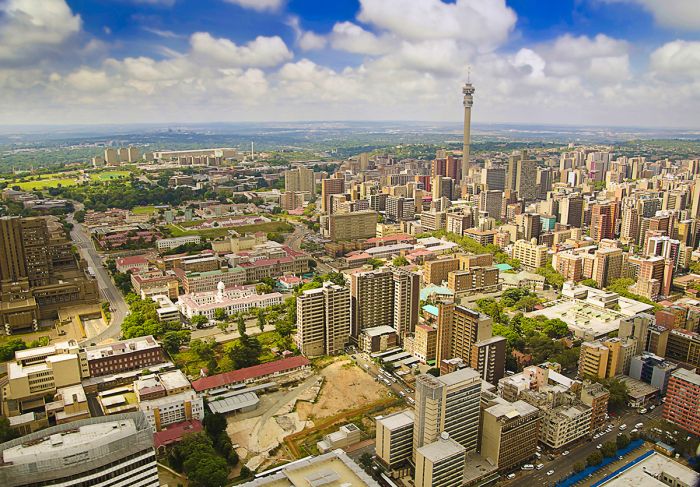
Johannesburg's Central Business District (CBD)
The City Centre, also called the Central Business District (CBD), is a tightly packed grid of mostly one-way streets and skyscrapers, and is the nucleus of the original city. It was the core of Joburg's commercial and financial business for around 100 years after the first gold mining camps were constructed.
The high rate of crime in the CBD during the 1980s and 1990s resulted in a mass exodus of businesses, including the Johannesburg Stock Market, which moved to Sandton in 1999. Since then, the CBD has been all but deserted. In recent years, the CBD has experienced some rejuvenation due to regeneration projects.
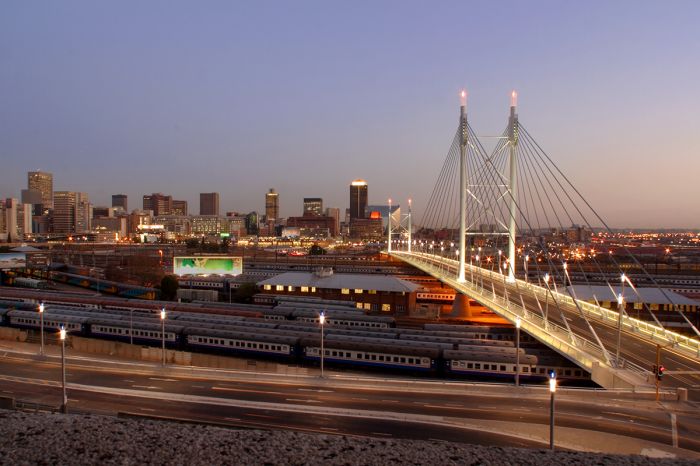
The Nelson Mandela Bridge in downtown Johannesburg
Sandton and Northern Suburbs
The upscale northern suburbs include numerous hotels, shops, restaurants and high-value homes. The area is very safe and a popular destination for tourists.
Sandton is a swanky and very rich suburb, with a mix of shops, corporate business campuses, banks, and lavish homes. Many of the business that fled the CBD (see above) during the 1980s and 1990's relocated to Sandton.
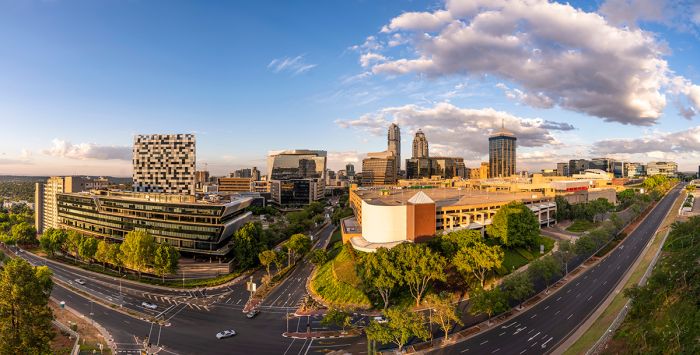
View over Sandton, Johannesburg
The famous Nelson Mandela Square is an open-air quadrangle surrounded by high-end hotels, the Sandton City shopping mall, the Johannesburg Convention Centre, and numerous restaurants and cafés. A huge bronze statue of Nelson Mandela sits at one end of the square and it is a busy and bustling place filled with locals and tourists every day
Just south of Sandton, the suburbs of Rosebank, Melrose, and Hyde Park also offer visitors a wide choice of hotels and guest houses, plus shopping malls, restaurants, art galleries, cafés, and antique shops.
The Rosebank Art & Craft Market and the Rosebank Sunday Flea Market are great places for people to mingle with locals and shop for curios, art, African masks, home décor and clothing. Haggling is expected!
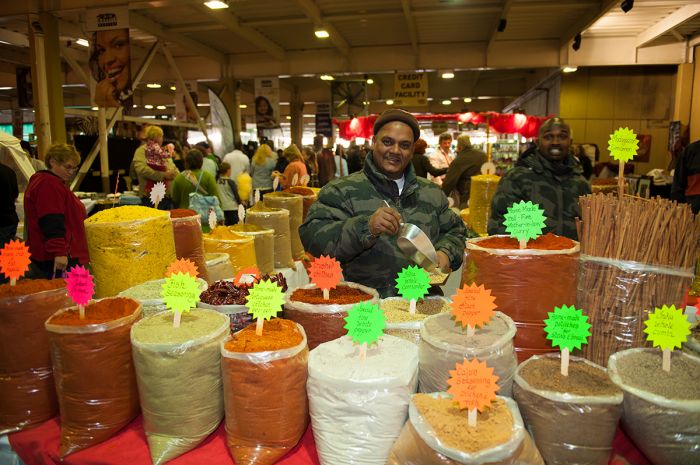
Spices for sale at the Rosebank Sunday Flea Market (Copyright © James Weis)
Southern Suburbs
The suburbs directly south of the CBD were once the realm of white working class citizens, but since the end of Apartheid, has seen a steady influx of black people. Southern Joburg also has a significant Portuguese population and it was here that the famous Nando's restaurant chain was started by two Portuguese-decent South Africans.
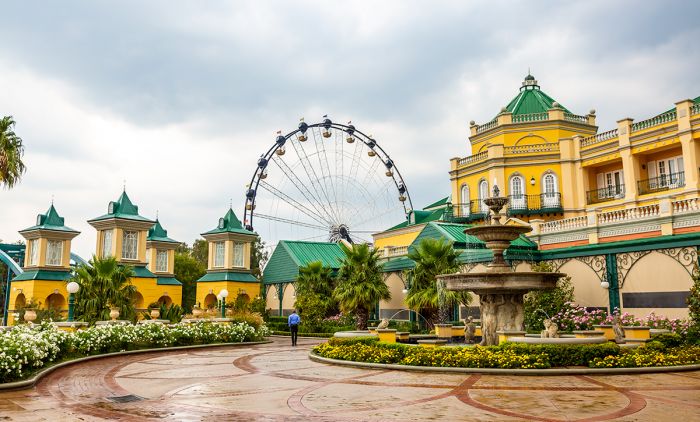
Gold Reef City, Johannesburg
Gold Reef City is a touristy, theme park with a large entertainment complex built around an old gold mine shaft. Visitors can descend into the mine itself. The main focus here is the casino, but there are also numerous shops, restaurants, museums and thrill rides.
The Apartheid Museum opened in 2001 is a highly recommended attraction that illustrates the history of apartheid in South Africa in the 20th century in a superbly visual and compelling way. Allow a minimum of two hours to explore the museum and its displays, photography and movies.
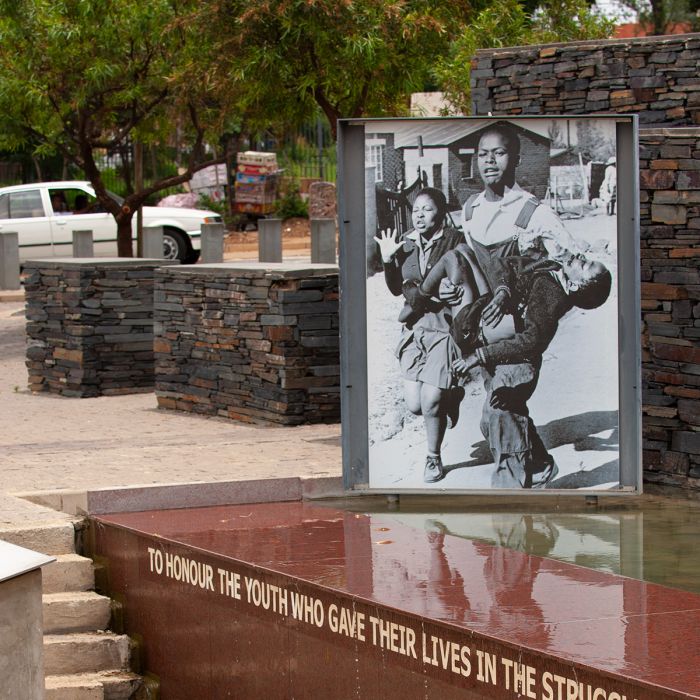
Image on Vikalazi Street in Soweto. (Copyright © James Weis)
Soweto
Located southwest of Joburg's CBD, Soweto (short for South Western Township) is South Africa's most infamous black township, having been most closely associated with apartheid. It gained the world's attention in 1976 with the Soweto Uprising, when mass protests exploded over the government's decision to enforce education in Afrikaans (the language of the original white settlers) and English, rather than in any of the black native languages.
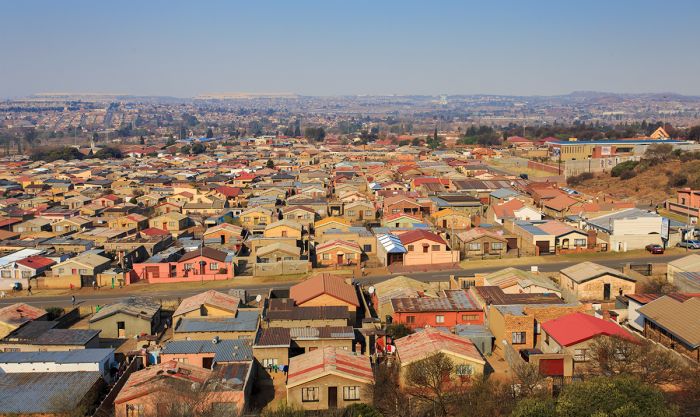
View over Soweto
Soweto is a massive place today, stretching it seems to the horizon and with a population of around 4 million. It is also place of many contrasts, with some very affluent sections and home to scores of millionaires, yet also a place of deep poverty for most of its inhabitants. Nelson Mandela and Desmond Tutu both lived in Soweto and both earned Nobel Peace Prizes, yet Soweto continues to have one of the world's highest rates of murder and rape.
Guided tours of Soweto are the single most popular attraction in Joburg. The tours have become almost mainstream though, so using a tour operator that will mix in the conventional sites with lesser-known sites is recommended.
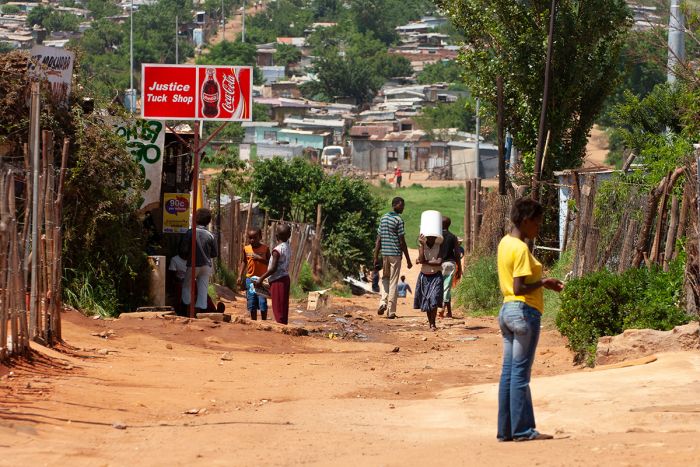
View along a road in Soweto (Copyright © James Weis)
Cradle of Humankind (COH)
Located 40 kms (25 miles) northwest of central Joburg in the foothills of the Magaliesberg Mountains, the Cradle of Humankind is a paleontological site covering 470 sq kms (181 sq miles). The COH was declared a UNESCSO World Heritage Site in 1999 owing to the fact that it has produced 40% of the world's hominid fossil discoveries in the last half century. Together with Tanzania's Olduvai Gorge, it is one of Africa's most important fossil discovery sites.
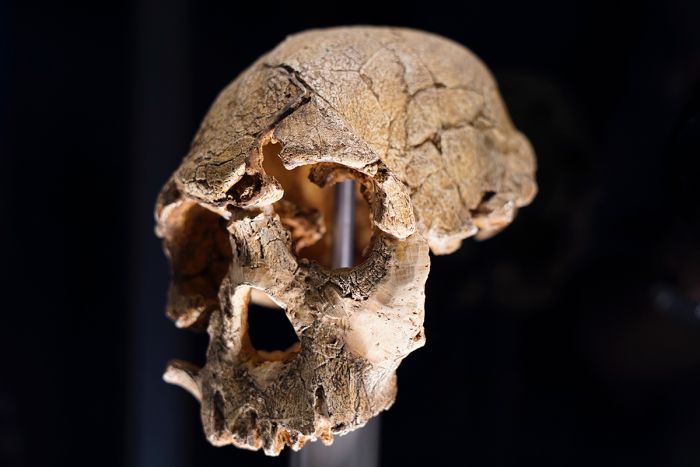
Skull exhibit at the Maropeng Visitor Centre, Cradle of Humankind
COH is a series of caves and archeological sites that are best known for the Sterkfontein Caves, which are believed to be the home for pre-human primates that date back more than 4 million years and the birth of Homo sapiens. Famous finds at Sterkfontein include Mrs Ples, an Australopithecus skull dating back 2.1 million years, and Little Foot, a near-complete Australopithecus skeleton more than 3 million years old.
Day tours to visit the Cradle of Humankind are extremely interesting and highly recommended.
Gautrain
Gautrain is an 80-km (50-mile) commuter rail system (completed in 2012) that connects O.R. Tambo International Airport with Sandton and Rosebank, as well as north all the way to Pretoria.
Most of the system is above ground, while the southern portion that passes thru Sandton is underground. The trip from the airport to Sandton takes just 15 minutes, far less than dealing with Joburg's congested traffic. Trains leave every 10-20 minutes depending on time of day.
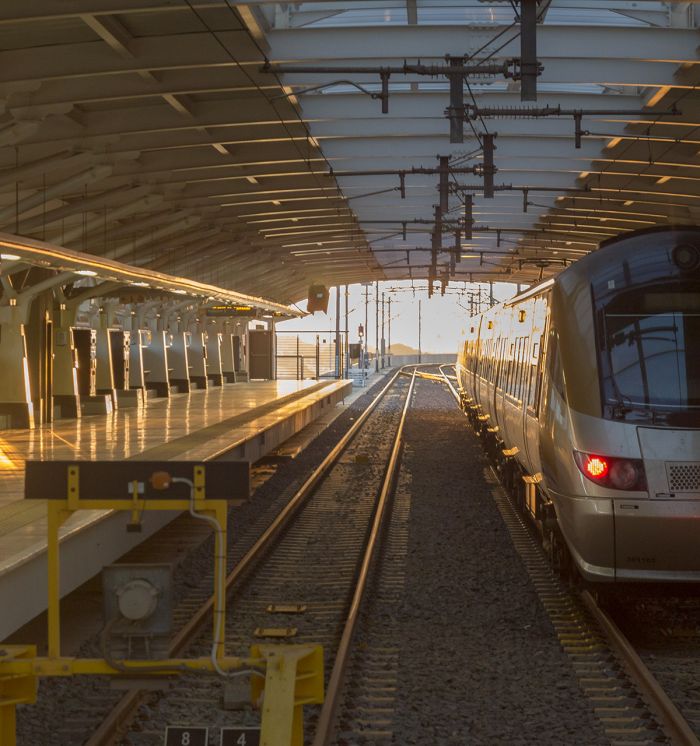
The Gautrain at the O.R. Tambo International Airport station
Read More...
Apartheid Museum, CBD, City Centre, Cradle of Humankind, Gautrain, Geography, Gold Reef City, History, Northern Suburbs, Sandton, Southern Suburbs, Soweto
Great Good Fair Poor
- Jan
- Feb
- Mar
- Apr
- May
- Jun
- Jul
- Aug
- Sep
- Oct
- Nov
- Dec
Johannesburg boasts great weather all year and is a year-round destination. The locals will be the first to tell you that their climate is the best in the world!
Summers (November thru March) experience average high temps of 78°F (25°C) and rainfall that mainly occurs as late afternoon or evening showers or thunderstorms. Most of the rain falls during the summer months. Days are typically sunny and very pleasant with high temps rarely exceeding 86°F (30°C). Nights are cool, falling to around 57°F (14°C).
Winters (May thru August) are pleasant and dry, with average high temps of 65°F (18°C). Rainfall is rare to non-existent. Overnight temps can get quite cold, falling to near freezing. June and July are the coldest months.
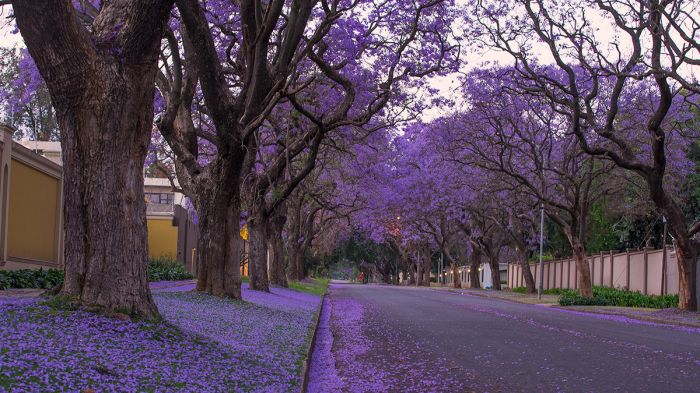
Jacaranda trees line a suburban street in Johannesburg




